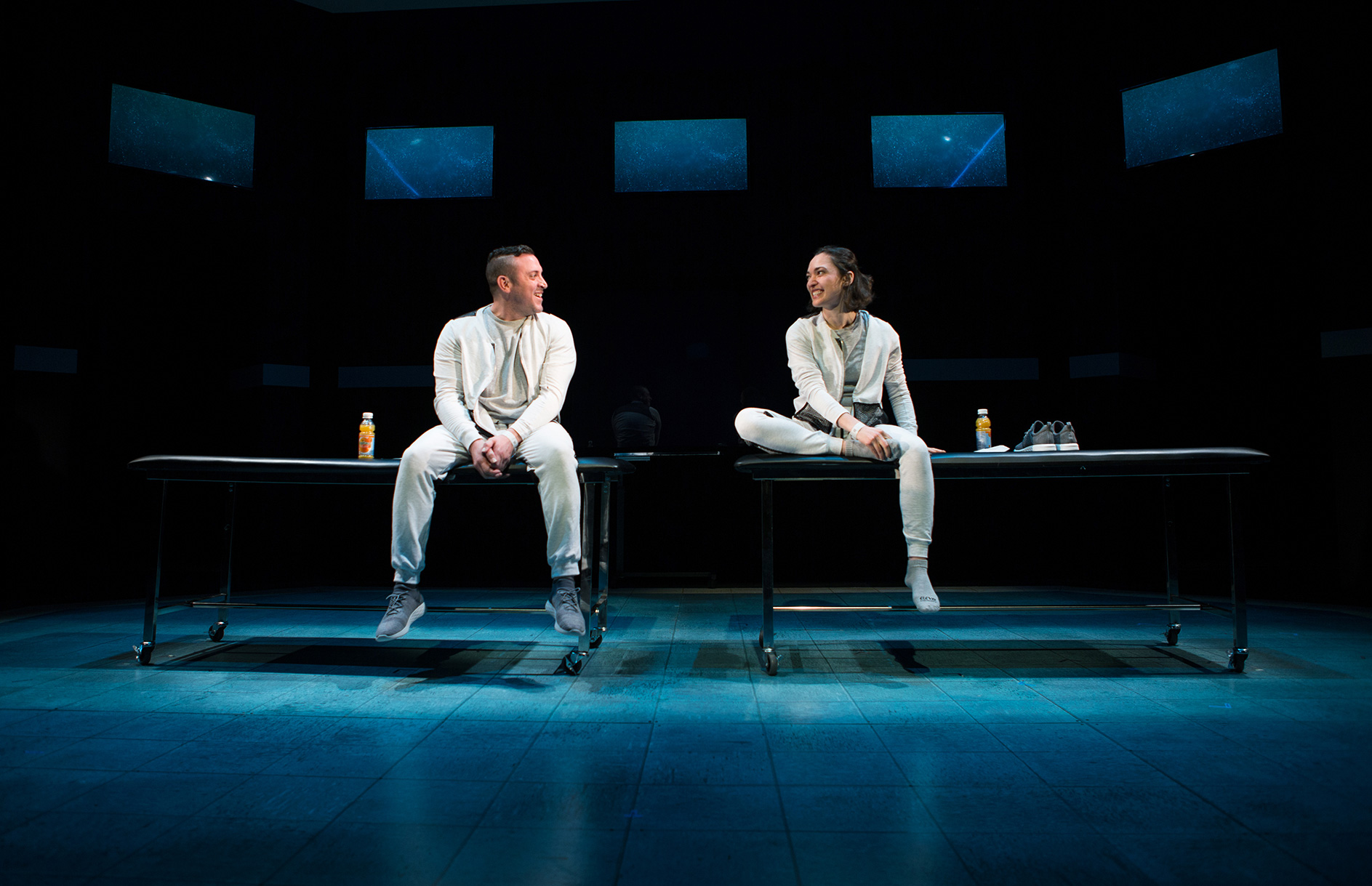SF Playhouse’s production of Lucy Prebble’s “The Effect” falls into a genre of plays that I’ve noticed has recently become popular. I’ve been fascinated by this new genre — of sorts — of plays that aren’t quite science fiction, but aren’t quite in the realm of what we might see as traditional stories involving science — that is, their narratives center around science as a tool and as an anchoring point. (Nobody say “Ready Player One” — that is science fiction on some kind of bizarre steroids, and no matter how much of a nerd I am, I will always acknowledge that fact). SF Playhouse’s season this year is filled with this sort of play. From “Non-Player Character” to the upcoming “An Entomologist’s Love Story,” I’m excited to see where they take these plays.
“The Effect” tells the story of Connie (Ayelet Firstenberg) and Tristan (Joe Estlack), two people who commit to involvement in a medical trial over a period of four weeks. They are monitored by Dr. Lorna James (Susi Damilano) and Dr. Toby Sealey (Robert Parsons), whose own story runs parallel to that of Connie and Tristan. Connie and Tristan suddenly find themselves falling madly in love, but they struggle with determining if it’s due to the drugs or their own feelings — and is one of them on a placebo?
Firstenberg and Estlack strike up an extremely compelling chemistry. I began rooting for them right from the start (of course, even if I knew that was the idea). Firstenberg’s emotional range from start to finish is highly impressive, while Estlack’s sympathetic counterpart turns him into a lovable dork rather than an asshole, something I was extremely worried about at first (thanks to Prebble’s naturalistic, convincing dialogue — something about female writers, maybe?).
“The Effect” was also extremely effective in playing with withholding information from the audience — there was even an audible gasp in the small audience on Sunday when I saw the show, a credit to Prebble’s ability to slip in details and build the world around the medical aspects. Arguably, there seemed to be some medical inconsistencies in terms of ethics regarding the experiment, but surprisingly, I could put that aside for the sake of the story. I felt myself getting personally invested in Connie and Tristan’s story as they teased each other, growing closer. I was most profoundly affected by an extremely clever montage that depicted their growing intimacy over the course of one evening — short five to 10 second vignettes of snapshots during the forbidden night where they’re not allowed to be intimate with other subjects in the experiment. As the music plays, the audience tracks their experience along with them, a beautiful mini-sequence of tender care.
I had similar likes and similar qualms about “The Effect” as I had with “Non-Player Character.” I’m always amazed by how the SF Playhouse is able to transform their intimate (compared to Broadway standards, but it’s a sizable theater in the Bay Area) theater into a completely new space each time. With scenic design by Nina Ball, the stage was starkly barren with hints of green and blue, a neo-futurist and cyberpunk aesthetic lining the space. I’m biased though — I love that sort of science-y feel when done effectively, and “The Effect” certainly did it well. I felt like I was in the middle of an “Orphan Black”-esque science fiction setting (think Dyad Institute, for anyone who watched that beloved show) when I walked in, each scene brought into the space with minimalist black, metal and white set pieces. I never felt out of place or decontextualized, which is often a concern for plays that utilize minimalist sets without much context in the body of the play. Transitions, especially, were conjured extremely effectively — a spin of a chair and a slight shift in lighting transformed the space from one office to another, an exam space to an abandoned mental asylum.
Similar to “Non-Player Character,” certain variable design elements used in conjunction with each other added significantly to the world of the piece, namely sound and lighting. Sound by Theodore J.H. Hulsker (notably the sound designer of San Jose Stage Company’s recent production of “Sweeney Todd”) and lighting design by Kurt Landisman filled up the space with that slightly disorienting, slightly alienating feeling that puts you on edge — scene to scene, a loud dull beep would sound, accompanied by a blue-out in lighting. This usage is so universally recognized in science fiction films that I was immediately transported out of my seat and into the world of “The Effect.”
“The Effect” also ran into similar issues as “Non-Player Character.” With a strong first act in both, each play struggled with wrapping up in a conclusive (or deliberately non-conclusive) way that didn’t create the feeling that the audience was cheated out of a resolution. I’ll give points to “The Effect” for being unexpected, but it also seemed to come out of nowhere. By the end, I wasn’t sure where Connie or Tristan were mentally with each other, mostly owing to a large twist thrown in near the end. The relationship between Lorna and Toby also appeared to be tragically twisted to attempt to mimic that of the two protagonists, which made the story a bit convoluted as I tried to track all the clues leading to that point. Still, the end didn’t spoil the beginning like I thought it might — it simply just didn’t feel like it fit.
Nevertheless, the SF Playhouse takes an interesting subject of mental versus physical affect and manipulation and turns it into a sympathetic story that is its production of “The Effect.” If you haven’t seen a play with science, medical ethics or any sort of STEM-related topics at the center, I recommend going — it’s worth it.
Contact Olivia Popp at oliviapopp ‘at’ stanford.edu.
